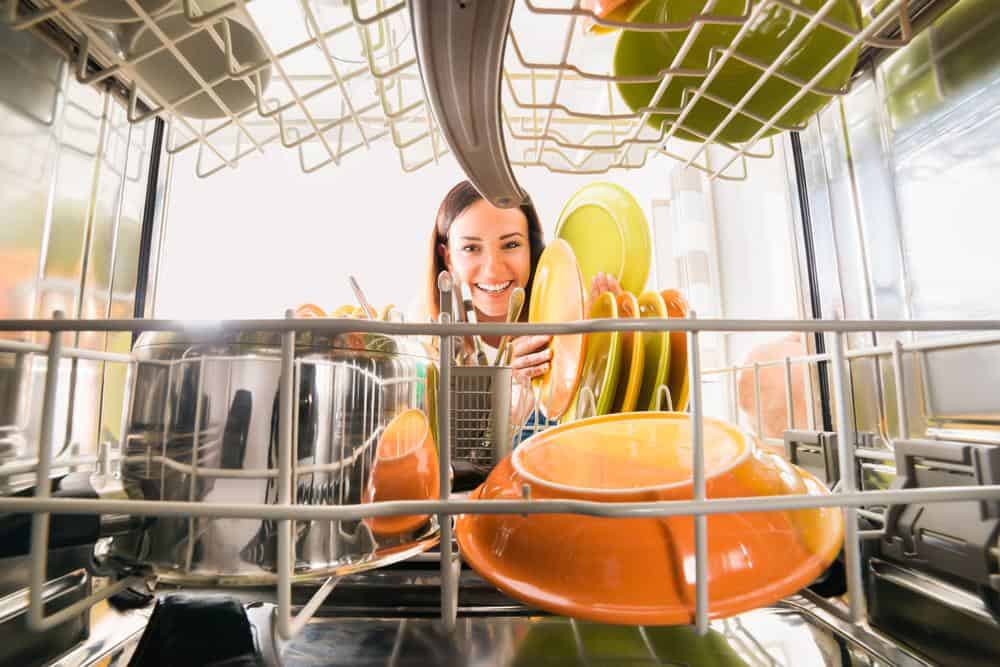
A clogged dishwasher drain can be a real nightmare. It can transform a useful appliance into a source of foul odors, unclean dishes, and pools of standing water. But don’t worry, troubleshooting a clogged dishwasher drain can be simpler than you think. With the right knowledge, you can unclog a dishwasher drain yourself and save money on calling a professional. In this comprehensive guide, we’ll walk you through the process step-by-step.
To unclog a dishwasher drain, start by disconnecting the power and removing any standing water. Clean the dishwasher filter and then pour a mixture of baking soda and vinegar down the drain. Let it sit for 15-30 minutes before running a hot rinse cycle. If the clog persists, check and clean the drain hose. If the dishwasher still isn’t draining properly, it might be time to call a professional.
Signs of a Clogged Dishwasher Drain
The first step in solving any problem is identifying it. Here are some signs that your dishwasher drain might be clogged:
- Gurgling sounds: Unusual sounds could indicate water trying to pass through a clog.
- Water backing up in the sink: If water backs up into your sink while the dishwasher is running, it could be due to a clog in the dishwasher’s drainage system.
- Slow draining or standing water: If your dishwasher or sink is draining slowly or there’s standing water in the dishwasher, it could indicate a clog.
- Unclean dishes: If your dishes aren’t coming out clean, it could be a sign that the dishwasher isn’t draining properly.
Tools and Materials Needed
Before you start, gather the necessary tools and materials:
- Baking soda and white vinegar
- Hot water
- Cleaning brush
- Drain cleaner or descaler (optional)
- Plunger (optional)
- Tongue-and-groove pliers
- Towels or rags
- Flashlight
Step by Step Guide to Unclogging Your Dishwasher Drain
Step 1: Empty the Dishwasher and Disconnect the Power
Always start by removing all dishes and cutlery from the dishwasher. Disconnect the dishwasher from power for safety reasons.
Step 2: Remove Standing Water
Use a cup or a sponge to remove any standing water from the dishwasher. Place towels around the base of the dishwasher to absorb any water that leaks out.
Step 3: Clean the Filter
The dishwasher filter is usually located at the bottom of the dishwasher. Remove it and clean it under running water. Use a cleaning brush to scrub off any debris.
Step 4: Use Baking Soda and Vinegar
Mix equal parts baking soda and vinegar (about 4 tablespoons each) and pour the mixture down the drain of the dishwasher. Let it sit for 15-30 minutes. This solution will help to break down any clogs.
Step 5: Run a Hot Rinse Cycle
After the baking soda and vinegar have had time to work, run a rinse cycle at the highest heat setting. This will help to flush out any remaining debris.
Step 6: Check the Drain Hose
If the clog persists, inspect the drain hose which connects the dishwasher to the sink or garbage disposal. Clean it using a drain cleaner solution or a drain snake, if necessary.
Step 7: Reassemble and Test
Once the clog is cleared, reassemble the dishwasher and run a test cycle to ensure proper drainage.
When to Call a Professional
If you’ve tried these steps and your dishwasher is still not draining properly, it might be time to call a professional plumber. Here are some signs that professional help might be needed:
- Multiple drains in your home are clogged
- Your dishwasher isn’t draining properly even after you’ve tried all the steps above
- The dishwasher is severely clogged or overflowing
- The dishwasher continues to not drain properly after you’ve attempted to remove clogs
Preventive Measures
To avoid future clogs, consider these preventive measures:
- Rinse dishes before placing them in the dishwasher
- Run your garbage disposal before starting a load in your dishwasher
- Clean the dishwasher drain and filter regularly
- Check the drain hose for blockages regularly
- Use the right type and amount of detergent
With these steps, you should be able to unclog a dishwasher drain and keep it running smoothly. However, if you’re not comfortable doing it yourself, don’t hesitate to call a professional. It’s better to be safe than sorry when it comes to your home appliances.
Frequently Asked Questions
What can I use if I don’t have baking soda and vinegar?
You can use a commercial drain cleaner or descaler. Follow the instructions on the package. However, be careful as some of these products can be harmful if they come in contact with your skin or eyes.
How often should I clean the dishwasher drain and filter?
You should clean your dishwasher’s drain and filter about once a month to prevent buildup that can lead to clogs.
What type of detergent is best for my dishwasher?
The best type of detergent depends on your dishwasher model. Check your dishwasher’s manual to see what the manufacturer recommends.
Can I use a plunger to unclog a dishwasher drain?
Yes, you can use a plunger to unclog a dishwasher drain. However, be careful not to use too much force as it can damage the dishwasher.
Why is my dishwasher draining slowly even after cleaning the drain and filter?
If your dishwasher is still draining slowly after cleaning the drain and filter, there might be a clog in the drain hose or the problem might be with the pump. At this point, it’s best to call a professional.












